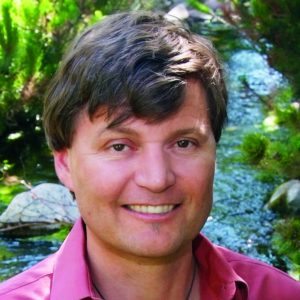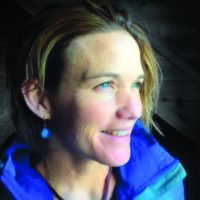“If you want to practice medicine, you better find something else,” an allopathic doctor once adviseded a sincere young pre-med student. Babbie Lester heeded that doctor’s words and took a different path to helping others heal. After college, she apprenticed under Alberto Villoldo, Ph.D. of the Four Winds Society, for a neo-shamanism education. Then she discovered naturopathic medicine.
Lester now combines her practice of naturopathic Medicine with Chinese Medicine and Shamanic Therapy, which, she tells me in her grounded composure, “complement each other very well.” She practices out of Mountain Sage Natural Health in Park City.
The story rings familiar among many naturopathic doctors in Utah.

Todd Cameron, N.M.D, began his medical career as an EMT after witnessing a harrowing rock climbing accident in which a climber broke his hips and bled to death before help could arrive.
He progressed to become an ICU nurse and was on his way to studying Emergency Medicine. From the emergency room, Dr. Cameron concluded and still believes that “Western Medicine has become very efficient at life-saving procedures in emergency situations.” Then, he met the late William Allen Nunn, N.D.
Dr. Nunn, a decorated war veteran, was a practicing naturopathic doctor in Utah for over 20 years and a good friend of Cameron’s until the end of Nunn’s life. Nunn inspired Dr. Cameron to follow in his footsteps and study at National College for Naturopathic Medicine in Portland, Oregon. Dr. Cameron has been practicing out of Cameron Wellness, Salt Lake City, since 1996.
I spoke with Dr. Lester and Dr. Cameron because I’ve been on my own journey to find a way to practice medicine that is the most authentic fit for me. On my journey so far, I was inspired by Phil Wharton, a world-renowned musculo-skeletal therapist in Washington, D.C., who encouraged me to gather knowledge from all the sources I found interesting and useful in order to build my own unique toolbox of healing.
My intentions and determination to help others heal comes from a young discovery of how good I felt when I was healthy and happy. I remember as a six year-old, when experiences are so much more ripe and rich, how the aspen forests of the Uintas made me feel inexplicably connected. When others are also happy and healthy, I feel even better. When we’re all outside laughing, moving and being present, I feel the best!
“Health is number one,” said a wise Taoist monk whom I studied under. He taught that cultivating healthy habits in our mind, emotions, body and spirit are a constant process, through stressed and carefree times. It’s my passion to discover and share the methods and of different cultures, from ancient practices to modern medicine.
From Washington, D.C., to the Wudang Mountains of China, and through my own twists and turns in and out of wanting to study conventional medicine, I’ve decided to attend the School of Naturopathic Medicine at Washington’s Bastyr University in the fall of 2017.
What is naturopathy?
NAture-pathy, natUro-pathy, however you want to say it, not a lot of people know what it actually is.
With terms like “functional,” “integrative” and “holistic” being tossed around, not to mention the dreaded C-word (complementary) and even worse, the A-word (alternative), we picture eclectic doctors prescribing bitter herbs and colonics.

Uli Knorr, N.M.D. Eastside Natural Health, helped clarify this perplexing vocabulary: “Naturopathy is holistic and integrative. It can [also] be termed functional medicine.”
Holistic is to consider how all organ systems work together, as well as how all dimensions of health work together to make us happy and healthy—physically, emotionally, mentally and spiritually.
The key to this medicine is to recognize and support the body’s innate healing power, instead of suppressing it with powerful pharmaceuticals.
Integrative signifies that a naturopath can, in a sense, speak languages of both conventional medicine and natural remedies from ancient traditions, the new and the old.
The naturopathic approach is functional because it is concerned with the functioning of organ systems before they are completely “malfunctioning.” It aims to bring function up to an optimal state before things go wrong—aka preventive medicine.
What it takes to get there
Though naturopathic doctors come from a diverse backgrounds, the practice and education of naturopathy is becoming more and more standardized.
The schooling is rigorous—four or five years of study with many of the same science and health courses as those found in medical school.
The initials N.D. or N.M.D. stand for naturopathic doctor or naturopathic medical doctor. In Utah, N.D.s are technically N.M.D.s, explained Dr. Cameron.
To practice in Utah, N.D.s must pass the Naturopathic Physicians Licensing Exam and complete a one- to two-year residency or clinical rotations.
Most practice as primary care physicians in private clinics and may administer blood tests, I.V.s, injections, perform minor surgery and prescribe drugs that are not controlled or scheduled. “We are able to prescribe most medications, but that is usually not a part of our initial treatment plan because there are many other modalities such as nutrition, herbs and lifestyle modifications that are very effective in treating patients’ ailments,” Amanda Lucero, N.M.D. of Full Circle Care in Salt Lake City, told me.

This is how naturopathy differs from conventional medicine. Doctor as Teacher, called doceré is one of the principles of naturopathy. N.M.D.s are taught to take the time to teach patients and walk with them on the path to wellness. In a session with an N.D., a patient will typically spend an hour describing their ailments, and the N.D. will diagnose him or her with blood tests, counsel them on diet and lifestyle, formulate herbal supplements and prescribe physical medicine and hydrotherapy. Some N.D.s also have secondary fields of study, such as acupuncture and traditional Chinese medicine (T.C.M.), craniosacral therapy, counseling and more.
Of the N.D.s I spoke with, the primary reasons their patients came to them were for fertility, endocrine, cardiovascular, musculoskeletal and digestive issues, as well as auto-immune disorders and chronic inflammation.
“This is where naturopathy has enormous potential to fill a void, in the treatment of these chronic diseases,” says Uli Knorr. “Our current culture of food and lifestyle have left us celebrating the to-do list, getting less sleep in order to get a million things done. Lots of patients these days are stressed and need metabolic support, and naturopathy has a lot to offer for this condition that is becoming an epidemic.” A remedy freely available to all is sunlight, which “balances the parasympathetic nervous system for rest and relaxation. Not to mention you’re typically moving while you’re outside,” says Dr. Knorr.

“This medicine is truly curative, and it is also a process that takes time,” Dr. Lester reminds her patients, who have often already tried conventional medicine to no avail. In particular she encourages cancer patients to use both conventional and naturopathic courses of treatment.
I asked the N.D.s I spoke with to share their own practices for staying healthy. Their universal secret was simple: Eat well, sleep well, spend time with family and, most importantly (and true to their title), get outside to spend time in nature.
Rachel Silverstone recently returned from studying Taoist medicine in China and will be going on to study naturopathic medicine at Bastyr University. See her new column, “Health Notes,” in CATALYST starting next month.
